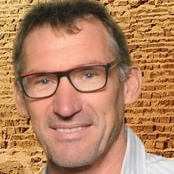3D Modelling from Point Clouds: Algorithms and Methods
A special issue of Remote Sensing (ISSN 2072-4292). This special issue belongs to the section "Remote Sensing Image Processing".
Deadline for manuscript submissions: closed (31 July 2018) | Viewed by 48902
Special Issue Editors
Interests: close-range photogrammetry; architectural photogrammetry & laser scanning; mobile mapping systems and photogrammetric computer systems; integration and accuracy of data in 3D city and building models
Special Issues, Collections and Topics in MDPI journals
Special Issue Information
Dear Colleagues,
Image-based and range-based techniques have evolved considerably during the last decade, and are used in numerous fields of applications. The resulting point clouds are interesting for visualization but the processing of 3D models is necessary to structure the data and develop a mathematical representation of the objects. There are several tools currently available providing automatic or semi-automatic methods for 3D modelling from point clouds, but, often, only limited information about the algorithms are given to the users. Authors are invited to submit papers focused on the theory of the algorithms and new methods of 3D modelling based on various sources of point clouds. Papers highlighting the evaluation of the quality of the input data and of the resulting 3D models, as well as the assessment of the algorithms and the performance analysis of the methods are strongly encouraged.
This Remote Sensing Special Issue is meant to support the above-mentioned scope by collecting and publishing research and review papers on related topics. Extended and improved papers from related conferences are also welcome. Papers should be structured in two part sections:
- 3D modeling: methods and procedures
- Applications
Papers based on commercial software only are not expected for this issue.
We are inviting submission including, but not limited to:
- Aerial and terrestrial mapping
- Smart city Modelling
- Mobile Mapping
- Indoor and outdoor Mapping
- Building Information Modelling
- Underwater Mapping
- Cultural Heritage
- Environmental recording
- Processing of large datasets
- Merging of various sources of point clouds
Prof. Klaus Hanke
Guest Editors
Manuscript Submission Information
Manuscripts should be submitted online at www.mdpi.com by registering and logging in to this website. Once you are registered, click here to go to the submission form. Manuscripts can be submitted until the deadline. All submissions that pass pre-check are peer-reviewed. Accepted papers will be published continuously in the journal (as soon as accepted) and will be listed together on the special issue website. Research articles, review articles as well as short communications are invited. For planned papers, a title and short abstract (about 100 words) can be sent to the Editorial Office for announcement on this website.
Submitted manuscripts should not have been published previously, nor be under consideration for publication elsewhere (except conference proceedings papers). All manuscripts are thoroughly refereed through a single-blind peer-review process. A guide for authors and other relevant information for submission of manuscripts is available on the Instructions for Authors page. Remote Sensing is an international peer-reviewed open access semimonthly journal published by MDPI.
Please visit the Instructions for Authors page before submitting a manuscript. The Article Processing Charge (APC) for publication in this open access journal is 2700 CHF (Swiss Francs). Submitted papers should be well formatted and use good English. Authors may use MDPI's English editing service prior to publication or during author revisions.
Keywords
- photogrammetry
- laser scanning
- sonar
- point clouds
- 3D modelling
- reconstruction
- algorithms
- methods
- accuracy
- assessment






